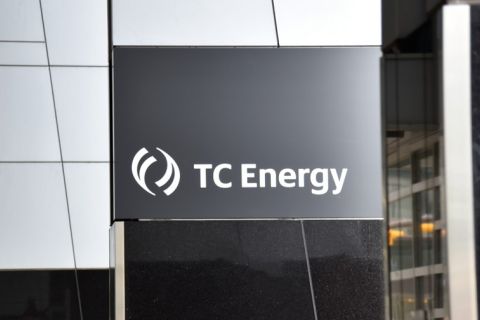Without a doubt, the shares of oil-service stocks posted remarkable gains in 2004. As the year came to a close, the Philadelphia Oil Service index (OSX) was up more than 30%; the S&P 500, a mere 6%. But even greater market gains may be ahead for the service sector, this year and next, according to several seers. In the land-drilling arena, the supply of viable rigs is becoming increasingly scarce as demand continues to march steadily upward, notes Scott B. Gill, an analyst for Simmons & Co. International in Houston. "U.S. Lower 48 fleet utilization has crossed the historical threshold level of around 85% where rig rates begin to move significantly higher," he says. This thesis was born out in third-quarter 2004, with leading dayrate increases for land rigs averaging $500 for that period. The outlook is for land-rig dayrate increases to continue-if not accelerate-during the next several quarters, says Gill. Outside the U.S., a similar dynamic is at play where demand is outstripping readily available land-rig supply, the analyst observes. In response, U.S. drilling contractors are currently refurbishing cold-stacked domestic rigs for work in distant international regions such as the Middle East. With an outlook of improving fundamentals for the sector, Gill believes the stocks of land contract drillers-at recent prices-are attractively valued given that they possess appreciation potential in excess of 50% during the next two years. "We are thus buyers of Grey Wolf, Nabors Industries, Precision Drilling and Patterson-UTI." Judson E. Bailey, an oil-service analyst for Jefferies & Co. in Houston, is equally sanguine about the offshore drilling sector. Despite deepwater-leveraged names increasing 40% in share value through the first three quarters of 2004, "we expect [them] to continue to outperform the rest of their contract-drilling peer group through 2005-due to improving fundamentals as well as superior long-term growth prospects," he asserts. Bailey points out that Jefferies' deepwater coverage group has recently been trading at 13.8 times estimated 2005 cash flow per share, 13.4 times 2005 TEV (total enterprise value)/EBITDA (earnings before interest, taxes, depreciation and amortization), and at 166% of NAV (net asset value). These ratios, the analyst emphasizes, are still at the low end of the group's historical early-cycle trading ranges of 15 to 18 times forward cash flow per share, 13 to 18 times TEV/EBITDA, and 200% to 250% of NAV. "With [deepwater-rig] utilization increasing and dayrates beginning to accelerate, we believe that further multiple expansion is justified and that further upside from current price targets is possible as we move closer to 2006-which could be a peak year for some asset classes," says Bailey. The analyst also stresses that global jackup-rig demand-already strong in 2004-will likely see further improvement in 2005, driven by rising activity levels in the Middle East, Southeast Asia and India. In addition, he expects firm jackup-rig activity levels in the Gulf of Mexico, as well as a modest recovery in jackup demand in West Africa and the North Sea. Bailey's coverage among offshore drillers includes Transocean, GlobalSantaFe and Noble Corp. Equally upbeat, Kevin Wood, oil-service analyst for Susquehanna Financial Group in New York, expects oil-service stocks to continue to outperform the broader market in 2005. The rationale for this outlook? "We expect worldwide E&P expenditures to be up 10% or more in 2005, owing to high oil and gas prices that led to 'windfall' profits and cash flows for the industry in 2004. Furthermore, tight global crude oil supplies and robust demand have encouraged increased investment." The analyst projects median earning-per-share (EPS) growth of 27% for his coverage universe in 2005, following estimated EPS growth of 38% in 2004. Solid earnings growth, he says, is expected to propel oil-service shares higher. The analyst recommends the shares of Baker Hughes, Halliburton and W-H Energy Services. "In our view, the success of new technologies-rotary steerable drilling systems, underbalanced drilling and 'intelligent' wells-will determine the degree of sector outperformance," says Wood. "Our recommended stocks have high exposure to these budding technologies."
Recommended Reading
TC Energy’s Keystone Back Online After Temporary Service Halt
2024-03-10 - As Canada’s pipeline network runs full, producers are anxious for the Trans Mountain Expansion to come online.
Enbridge Fortifies Dominant Role in Corpus Christi Crude Transport
2024-03-20 - Colin Gruending, Enbridge executive vice president and president for liquids pipelines told Hart Energy the company’s holdings in South Texas are akin to a “catcher’s mitt” for Permian and Haynesville production.
Early Startup of Trans Mountain Pipeline Expansion Surprises Analysts
2024-04-04 - Analysts had expected the Trans Mountain Pipeline expansion to commence operations in June but the company said the system will begin shipping crude on May 1.
Kinder Morgan Sees Need for Another Permian NatGas Pipeline
2024-04-18 - Negative prices, tight capacity and upcoming demand are driving natural gas leaders at Kinder Morgan to think about more takeaway capacity.
Pembina Pipeline Enters Ethane-Supply Agreement, Slow Walks LNG Project
2024-02-26 - Canadian midstream company Pembina Pipeline also said it would hold off on new LNG terminal decision in a fourth quarter earnings call.




